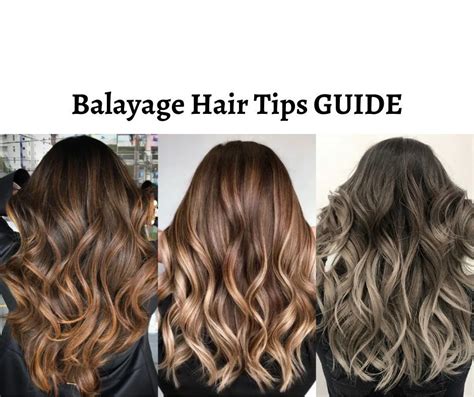Introduction

Ombre balayage hair, a fusion of two popular hair coloring techniques, has captured the hearts of fashion-forward individuals worldwide. This mesmerizing hair trend seamlessly blends shades of color, creating a captivating and alluring effect. In this comprehensive guide, we delve into the world of ombre balayage hair, exploring its techniques, benefits, drawbacks, and common mistakes to avoid.
What is Ombre Balayage Hair?
Ombre balayage hair is a hair coloring technique that combines the gradual transition of shades in ombre with the hand-painted application of balayage. The result is a natural-looking, dimensional hair color that appears to have been sun-kissed. The transition between colors can be subtle or bold, depending on personal preference.
Techniques for Ombre Balayage Hair
1. Traditional Ombre Balayage:
The traditional ombre balayage technique involves a gradual shift from a darker shade at the roots to a lighter shade at the ends. The color is applied in horizontal sections, resulting in a seamless blend.
2. Reverse Ombre Balayage:
Also known as “sombre,” reverse ombre balayage reverses the color transition. The hair is lightened at the roots and darkened towards the ends. This technique gives the illusion of growing out hair color.
3. Partial Ombre Balayage:
Partial ombre balayage focuses on coloring only a portion of the hair, typically the bottom half or front sections. This option allows for a subtle and low-maintenance way to experiment with ombre.
Benefits of Ombre Balayage Hair
1. Versatility:
Ombre balayage hair suits all hair types and lengths, from short bobs to long layers. It can be customized to complement any skin tone and facial features.
2. Low Maintenance:
Unlike traditional hair dyeing, ombre balayage hair does not require frequent touch-ups. The color grows out gracefully, blending seamlessly with the natural hair color.
3. Gradual Transition:
The gradual transition of shades in ombre balayage hair creates a natural-looking effect. It avoids the harsh lines and demarcation often associated with traditional hair coloring.
Common Mistakes to Avoid
1. Over-Processing:
Excessive bleaching can damage hair, leading to breakage and dryness. It is crucial to use professional hair products and follow the processing time carefully.
2. Uneven Application:
Hand-painted balayage requires precision and skill. Uneven application can result in splotchy or unnatural-looking color.
3. Incorrect Hair Type:
Ombre balayage hair may not be suitable for very thin or damaged hair. The bleaching process can further weaken these types of hair.
Pros of Ombre Balayage Hair
- Natural-looking and dimensional
- Low maintenance and grows out gracefully
- Versatile and suits all hair types and colors
- Can help to frame the face and enhance facial features
- Adds volume and movement to hair
Cons of Ombre Balayage Hair
- Can be expensive and time-consuming to achieve
- Requires professional application to avoid uneven results
- May require heat styling to enhance color and texture
- Can be more difficult to maintain than traditional hair coloring
Strategies for Ombre Balayage Hair
1. Gradual Approach:
Start with a subtle ombre balayage to avoid overwhelming your hair and skin. Gradually increase the color contrast as desired.
2. Professional Consultation:
Consult with a professional hairstylist to determine the best ombre balayage technique and color combination for your hair and skin tone.
3. Hair Care Regimen:
To maintain the vibrancy and health of your ombre balayage hair, invest in sulfate-free shampoos and conditioners. Deep condition your hair regularly to prevent dryness.
Conclusion
Ombre balayage hair is a captivating and versatile hair trend that offers a range of benefits. By understanding the techniques, benefits, drawbacks, and common mistakes to avoid, you can achieve the perfect ombre balayage hair that complements your style and enhances your natural beauty. Embrace the sun-kissed allure of ombre balayage hair and turn heads wherever you go.
